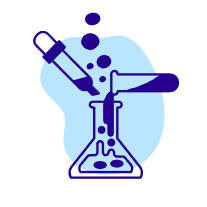Introduction: The Realm of Rare and Precious Elements
The periodic table, a testament to the fundamental building blocks of our universe, houses elements of varying abundance and utility. While some elements are readily available and integrated into our daily lives, others are exceedingly rare, requiring intricate extraction processes and possessing unique properties that command exorbitant prices. The “most expensive” list can shift with market dynamics, technological advancements, and geopolitical influences. However, certain elements consistently occupy the upper echelons of value. This exploration will dissect these elements, examining the intricate interplay of rarity, utility, and extraction challenges that define their worth.
1. Californium (Cf): The Pinnacle of Rarity and Radioactivity
- Key Words: Synthetic, radioactive, neutron emitter, nuclear reactors, cancer therapy.
- Price: $680 million per ounce
- Detailed Note:
- Californium, a synthetic radioactive element, is arguably the most expensive substance on Earth. Its rarity stems from its artificial creation in specialized nuclear reactors. Specifically Californium-252 is the isotype of the most value.
- The production process is complex, involving the bombardment of curium with alpha particles.
- Californium-252, a primary isotope, is a potent neutron emitter, making it invaluable for:
- Starting neutron sources in nuclear reactors.
- Neutron activation analysis, a technique for identifying trace elements.
- Cancer therapy, where its neutron emissions can target and destroy cancerous cells.
- Its dangerous radioactivity, and the extream difficulty to produce the substance is what drives its price extremely high.
- The sheer difficulty of production and the element’s radioactive nature contribute to its staggering price, often reaching millions of dollars per gram.
- Bibliography:
- National Nuclear Data Center. Brookhaven National Laboratory. https://www.nndc.bnl.gov/
- Californium – Wikipedia. https://en.wikipedia.org/wiki/Californium
2. Rhodium (Rh): The Catalyst of Automotive Industry
- Key Words: Platinum-group metal, catalyst, catalytic converters, corrosion-resistant, reflective.
- Price: $4,000 per ounce
- Detailed Note:
- Rhodium, a rare platinum-group metal, is renowned for its exceptional catalytic properties and resistance to corrosion.
- Its primary application lies in catalytic converters, devices that transform harmful exhaust gases from vehicles into less toxic substances.
- Rhodium’s high reflectivity also makes it valuable for specialized mirrors and optical instruments.
- The scarcity of rhodium deposits and the high demand from the automotive industry contribute to its volatile and often exorbitant price.
- Bibliography:
- Rhodium – USGS.gov. https://www.usgs.gov/
- Rhodium – Royal Society of Chemistry. https://www.rsc.org/periodic-table/element/45/rhodium
3. Palladium (Pd): Another Automotive Powerhouse
- Key Words: Platinum-group metal, catalyst, catalytic converters, electronics, jewelry.
- Price: 100,674.58 per ounce
- Detailed Note:
- Palladium, another platinum-group metal, shares a similar application profile with rhodium, with catalytic converters being its dominant use.
- It also finds applications in electronics, dentistry, and jewelry.
- Like rhodium, palladium’s price is highly susceptible to fluctuations in the automotive industry, as well as shifts in supply and demand.
- The recent surge in electric vehicles has affected pallidium markets, but it is still heavily used in hybrid vehicles.
- Bibliography:
- Palladium – USGS.gov. https://www.usgs.gov/
- Palladium – Royal Society of Chemistry. https://www.rsc.org/periodic-table/element/46/palladium
4. Platinum (Pt): The Versatile Precious Metal
- Key Words: Precious metal, catalyst, jewelry, electronics, medical devices.
- Price: $992.90 per ounce
- Detailed Note:
- Platinum, a renowned precious metal, possesses a unique combination of durability, corrosion resistance, and catalytic activity.
- It finds diverse applications in:
- Catalytic converters.
- Jewelry, where its luster and rarity are highly valued.
- Electronics, in components like hard disk drives and electrical contacts.
- Medical devices, including pacemakers and dental implants.
- Platinum’s stable value and widespread applications make it a significant player in the precious metals market.
- Bibliography:
- Platinum – USGS.gov. https://www.usgs.gov/
- Platinum – Royal Society of Chemistry. https://www.rsc.org/periodic-table/element/78/platinum
5. Iridium (Ir): The Hard and Corrosion-Resistant Element
- Key Words: Platinum-group metal, corrosion-resistant, hard, high-temperature alloys, electrical contacts.
- Price: $15,000 per ounce
- Detailed Note:
- Iridium, one of the rarest elements in the Earth’s crust, is celebrated for its extreme hardness and exceptional corrosion resistance.
- Its applications include:
- High-temperature alloys for aerospace applications.
- Electrical contacts, where its durability is essential.
- Specialized electrodes and scientific instruments.
- Iridium’s scarcity and the challenges associated with its extraction contribute to its high value.
- Bibliography:
- Iridium – USGS.gov. https://www.usgs.gov/
- Iridium – Royal Society of Chemistry. https://www.rsc.org/periodic-table/element/77/iridium
6. Osmium (Os): The Densely Valued Metal
- Key Words: Platinum-group metal, dense, hard, alloys, electrical contacts.
- Price: $20,000 per ounce
- Detailed Note:
- Osmium holds the title of the densest naturally occurring element, a property that makes it valuable in specific applications.
- It is often alloyed with other platinum-group metals to create extremely hard and wear-resistant materials.
- Applications include:
- Electrical contacts, where its durability and density are essential.
- Fountain pen nibs and other high-wear components.
- Osmium tetroxide, a compund, is also used in biological staining. Osmium powder also is dangerous and toxic.
- Bibliography:
- Osmium – USGS.gov. https://www.usgs.gov/
- Osmium – Royal Society of Chemistry. https://www.rsc.org/periodic-table/element/76/osmium
7. Ruthenium (Ru): The Versatile Catalyst and Electronic Component
- Key Words: Platinum-group metal, catalyst, electronics, chemical industry, solar cells.
- Price: $630.00 per ounce
- Detailed Note:
- Ruthenium, another member of the platinum group, demonstrates a diverse range of applications.
- It serves as a catalyst in various chemical processes, particularly in the production of chlorine.
- Ruthenium is also utilized in electronics, especially in electrical contacts and hard disk drives.
- Research into solar cells shows an increased interest in this metal.
- Its use in specialized coatings increases it’s industrial importance.
- Bibliography:
- Ruthenium – USGS.gov. https://www.usgs.gov/
- Ruthenium – Royal Society of Chemistry. https://www.rsc.org/periodic-table/element/44/ruthenium
8. Rhenium (Re): The High-Temperature Superalloy Component
- Key Words: High melting point, superalloys, jet engines, aerospace, filaments.
- Price: $10,000 per kilogram
- Detailed Note:
- Rhenium stands out for its exceptionally high melting point and ability to retain strength at elevated temperatures.
- It is a crucial component of superalloys used in jet engines and other high-temperature applications.
- Its applications in the aerospace industry are essential.
- It is also used in filaments for mass spectrometers.
- Bibliography:
- Rhenium – USGS.gov. https://www.usgs.gov/
- Rhenium – Royal Society of Chemistry. https://www.rsc.org/periodic-table/element/75/rhenium
9. Scandium (Sc): The Lightweight Strength Enhancer
- Key Words: Rare-earth metal, lightweight alloys, aerospace, sports equipment, lighting.
- Price: $84,997 per ounce
- Detailed Note:
- Scandium, a rare-earth metal, is prized for its ability to significantly enhance the strength of aluminum alloys.
- This has made it valuable in the aerospace industry, where lightweight, high-strength materials are essential.
- It is also used in high end sports equipment,
Conclusion
The prices of elements can fluctuate depending on market demand, production costs, and availability. The most expensive elements in the world are highly valued due to their rarity, difficulty in production, and unique properties. Understanding the uses, sources, and prices of these elements can provide valuable insights into the world
























